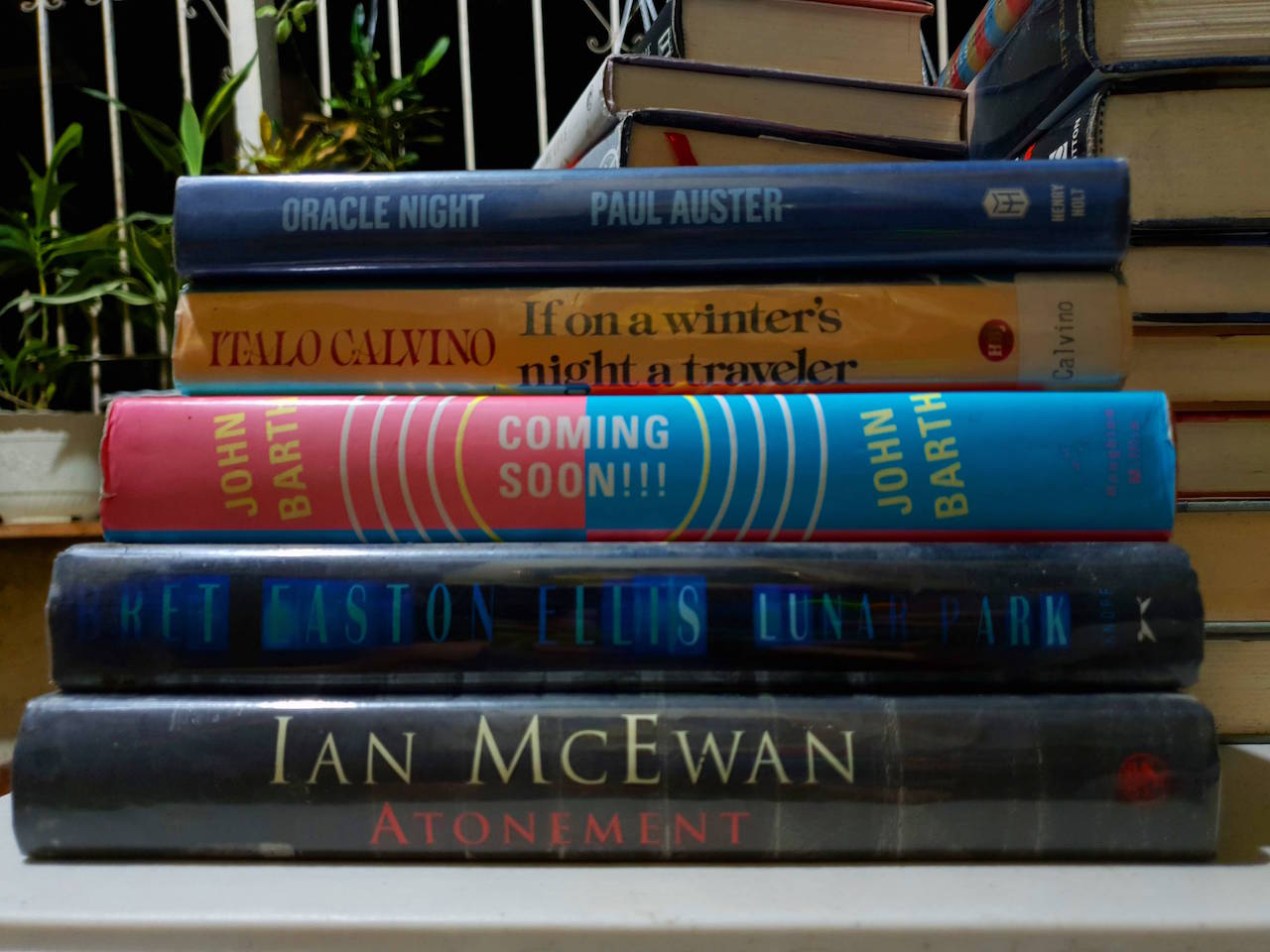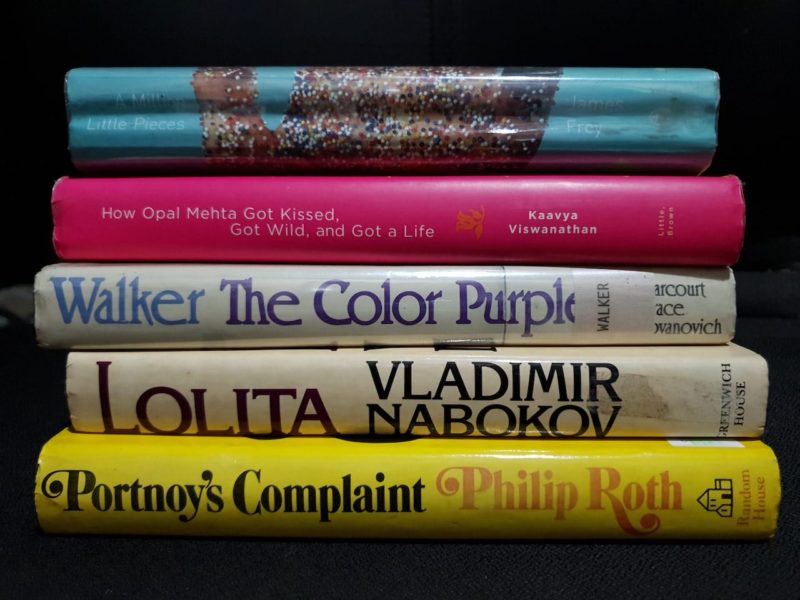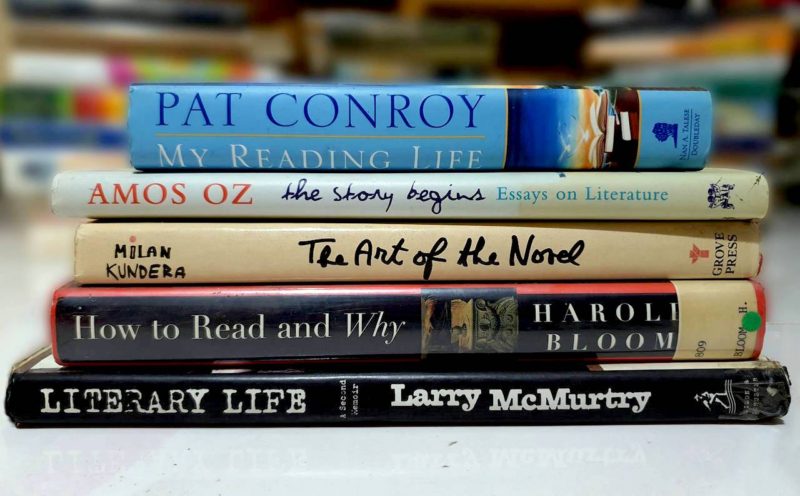Oracle Night (2003) by Paul Auster
The novel Oracle Night is a story-within-a-story published in 2003. As an example of metafiction, the book explores different story lines and timelines through a plot device known as metafictional narrative, a story referring to itself. On one story thread, it follows the main protagonist Sidney Orr waking from a near-fatal illness. Months after his recovery, he buys a blue notebook in a stationery shop in Brooklyn, which will trigger a bewildering series of events.
The other thread of the story deals with Orr’s conversation with another novelist who gives him an idea of a story from which Orr begins writing in the blue notebook a novel called Oracle Night. It’s tempting to compare the plot’s metafictional elements to a Russian doll with it’s multilayered narratives. However, the plot thickens as the book progresses and feels more like an assemblage of newsreels jumbled together into a dizzying tangles of narrative strands that in the end Auster was able to assemble quite successfully.
If on a winter’s night a traveler (1979) by Italo Calvino
Italo Calvino’s novel is about a reader who, while reading a book about winter, falls asleep and awakens in a world where his reading is to be completed. In this world, he encounters various other readers, each of whom is reading a different book. The protagonist, through a series of adventures and misadventures, learns that the other readers are his doubles, and he finally realizes that the reader of the book he is reading is himself.
The novel is a parody of the conventions of the novel. The narrator is trying to read a book called If on a winter’s night a traveler, but he can’t seem to find his copy. He becomes frustrated with the book, and decides to read another book, which he will tell the reader about. The reader follows this pattern with each chapter, and in the end, the narrator finds his copy of If on a winter’s night a traveler and proceeds to read it.
Coming Soon!!! (2001) by John Barth
The book Coming Soon!!! is a metafictional novel that explores the story of an aging novelist and an up-and-coming writer student. The mentor/mentee relationship of the characters is tested when the mentor tries to re-invent his previous novel The Floating Opera while his apprentice mentee tries to upstage his master by rewriting the original as a hypertext.
This novel is a labyrinthine metafiction with smoke-and-mirror tricks and self-referential narrative that explores the process of writing a novel. John Barth is a writer from America who has published a number of books that combines the genres of fantasy, science fiction, and realism. In “Coming Soon!!!” Barth tackles the theme of postmodernism using the literary plot device of two generations of rival writers and the blurring of lines between print and electronic fiction.
Lunar Park (2005) by Bret Easton Ellis
Lunar Park is a novel written by Bret Easton Ellis and published in 2005. It is Ellis’s first novel since “Glamorama.” The book is semi-autobiographical and uses the language of the first person narrator, as Ellis himself does, as well as the language of his characters. The book is about an author, named Bret Easton Ellis, who returns to his childhood home in Los Angeles for a retrospective of his work.
Lunar Park is a work of metafiction. The novel is presented as a self-narration by the author and contains regular references to pop culture and to the author’s own previous works. The novel opens with the protagonist, Bret, sitting in his office reading a review of his new novel Lunar Park. Bret seems to be bothered by the review, which calls him “the world’s most overrated author” and compares the book unfavorably with Vladimir Nabokov’s Pale Fire.
Atonement (2001) by Ian McEwan
Ian McEwan’s Atonement is a metafictional novel about love, betrayal, and the power of the imagination. The story is narrated by Briony Tallis, a 13-year-old precocious and imaginative aspiring writer who lives in the English countryside near the end of the 1930s. As the novel opens, Briony is busy preparing a play she has written, “The Trials of Arabella.”
The story revolves around the scene when Briony witnesses a sexual assault and, as a result, sends her sister’s lover to jail for a crime he didn’t commit. The story follows the girl as she grows up and the extent of the damage done. The metafictional element of the story is revealed towards the end of the book wherein Briony narrates how she attempted to atone for her sins of the past. Themes of the book include: guilt and responsibility, forgiveness and redemption, and the redemptive power of love.
Further Reading
Metafiction by Postcolonial Studies @ Emory
An Introduction to Metafiction by Patrick Kennedy, ThoughtCo.
Study of the Fragmented Structure in Oracle Night as a Metafiction by Hui Ni and Dawei Lian, Theory and Practice in Language Studies, Vol. 2, No. 3, pp. 540-546, March 2012
Only Genius, Wit, and Taste to Recommend Them: Metafiction and Feminine Literary Pursuits in Northanger Abbey and Atonement by Tori Link, Xavier Journal of Undergraduate Research: Vol. 4, Article 9




